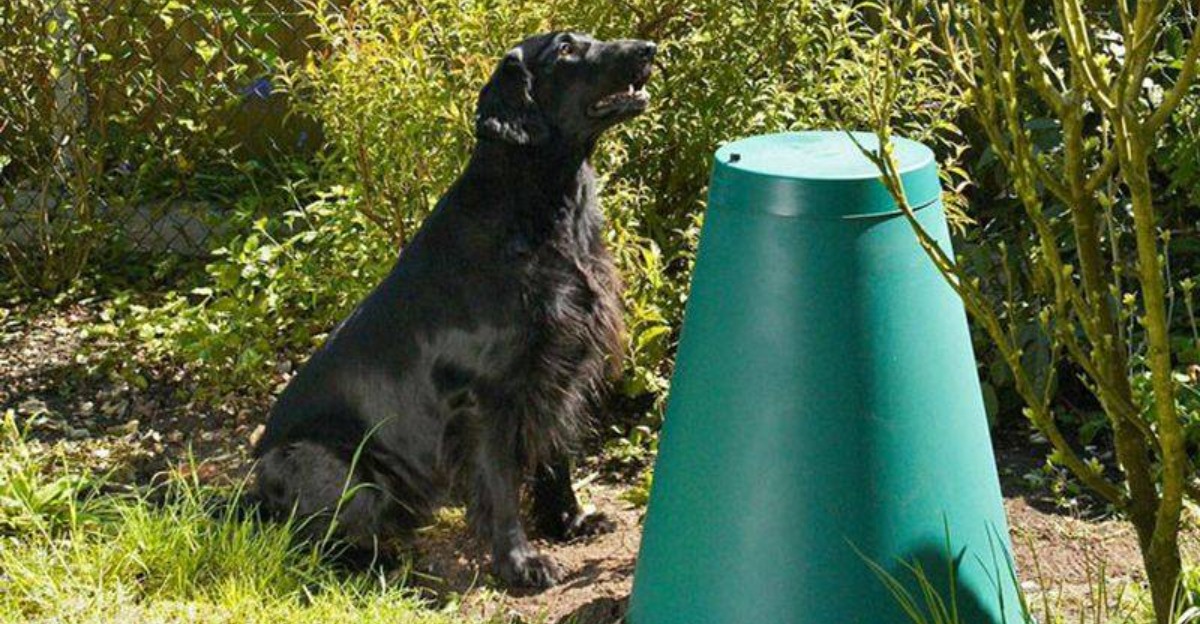
Exploring the ethics & best practices of declawing / docking / cropping (if still relevant locally)
This article examines the ethical, medical, and cultural dimensions of declawing, tail docking, and ear cropping, practices historically performed for convenience, tradition, or aesthetics. It explores the physical and psychological impact on animals, evolving global regulations, and modern veterinary perspectives, while highlighting humane alternatives and best practices that prioritize animal welfare, natural behavior, and responsible pet ownership in today’s society.
🐶 Pet Star
50 min read · 4, Oct 2025

Introduction
In the complex world of animal care and veterinary ethics, few topics provoke as much debate as declawing, docking, and cropping. Historically rooted in tradition, aesthetics, or practical reasons, these procedures have become the subject of intense scrutiny as society’s understanding of animal welfare deepens. Declawing cats, docking dogs’ tails, and cropping their ears are still performed in certain regions, often justified by cultural norms, hygiene concerns, or breed standards. However, growing evidence from veterinarians and animal behaviorists challenges the ethical legitimacy and medical justification of such practices.
This article explores the origins, motivations, ethical arguments, and evolving global regulations surrounding these procedures. It also offers insight into best practices and humane alternatives, helping pet owners and professionals make informed, ethical decisions that prioritize animal welfare.
1. Declawing: The Hidden Pain Behind Convenience
What Is Declawing?
Declawing, or onychectomy, is a surgical procedure involving the amputation of a cat’s last toe bone — equivalent to removing the last joint of a human finger. While often done to prevent scratching damage to furniture or people, it’s a major surgery with long-term consequences for the cat’s physical and emotional health.
Historical Context and Rationale
Declawing gained popularity in the mid-20th century as cats became indoor pets. Many owners viewed it as a “simple fix” for unwanted scratching behaviors. Some landlords even required declawed cats in rental agreements. However, modern veterinary ethics now strongly condemn such practices except for medically necessary reasons (e.g., tumor removal).
Physical and Psychological Effects
Declawing leads to several complications:
- Chronic pain from nerve damage or regrowth of improperly removed claws.
- Altered gait due to loss of balance and changes in weight distribution on paws.
- Behavioral issues, such as increased biting, anxiety, or litter-box avoidance.
- Emotional distress, as scratching is a natural feline behavior used for stretching and marking territory.
Ethical Perspective
From an ethical standpoint, declawing is considered unjustifiable mutilation unless medically required. The procedure benefits humans, not the animal, thus violating the principle of non-maleficence (do no harm).
Alternatives and Best Practices
- Scratching posts and pads encourage natural claw maintenance.
- Regular nail trimming prevents destructive scratching.
- Soft plastic claw caps (like Soft Paws) offer a non-invasive alternative.
- Behavioral training and environmental enrichment reduce destructive tendencies.
Legal Status
Declawing has been banned or heavily restricted in over 40 countries, including the UK, Australia, and most of Europe. In the U.S. and Canada, several cities and states have enacted bans, while others leave the decision to veterinary discretion.
2. Docking: A Tradition Under Ethical Fire
What Is Tail Docking?
Docking refers to the partial amputation of a dog’s tail, often performed when the animal is only a few days old. Historically, docking was believed to prevent rabies, strengthen the back, or avoid injuries in working dogs. Today, it’s primarily done for aesthetic reasons linked to breed standards in show dogs.
Historical Origins
Ancient Romans docked dogs’ tails to prevent rabies. In the 18th and 19th centuries, tax laws in England exempted working dogs (often docked) from certain fees, which indirectly promoted the practice. Modern kennel clubs have perpetuated it for cosmetic uniformity among breeds such as Dobermans, Boxers, and Cocker Spaniels.
Medical and Behavioral Consequences
- Acute pain and trauma in puppies, even when done early.
- Balance impairment, as dogs use their tails for communication, movement, and stability.
- Social communication deficits, as tail position signals emotion to other dogs.
- Infection or neuroma formation, leading to chronic pain.
Ethical Debate
Tail docking raises significant ethical issues. Since it’s often performed for appearance, not medical benefit, it conflicts with animal welfare principles. Most veterinarians and animal welfare organizations now oppose cosmetic docking, labeling it unnecessary mutilation.
Best Practices (Where Legal)
If docking is still performed (for instance, in working dogs prone to tail injuries), it must:
- Be done under anesthesia by a licensed veterinarian.
- Follow strict medical justification.
- Include pain management and post-operative care.
Legal Restrictions
Many countries — including the UK, Sweden, and Norway — ban cosmetic docking but allow it for medical necessity or certified working dogs. In the U.S., the American Veterinary Medical Association (AVMA) discourages the practice but does not outright ban it, leaving regulation to state law.
3. Ear Cropping: Aesthetic Choice or Ethical Breach?
What Is Ear Cropping?
Ear cropping involves surgically reshaping or removing part of a dog’s ear pinna to make it stand erect. Typically performed on breeds like Dobermans, Great Danes, and Boxers, cropping was once believed to reduce ear infections or prevent injuries during hunts or fights.
Cultural and Historical Context
In ancient times, ear cropping was used to make dogs look fiercer and to prevent tearing during combat. Over centuries, it became associated with breed identity, especially in guard and show dogs. However, the practice’s aesthetic and symbolic roots now conflict with modern ethics focused on animal welfare and pain reduction.
Physical and Emotional Impact
- Severe post-surgical pain and risk of infection.
- Prolonged healing time, as ears are often taped upright for weeks.
- Impaired communication, as dogs use ear positions to express emotions.
- Psychological distress, especially when performed without proper anesthesia.
Ethical Perspective
Like docking, cropping provides no proven health benefits in most cases. The procedure is primarily cosmetic, catering to human preference rather than canine need. Consequently, most animal welfare advocates classify it as unethical mutilation that infringes upon the animal’s natural integrity.
Best Practices (Where Still Legal)
In regions where cropping remains permitted:
- Only licensed veterinarians should perform it under full anesthesia.
- It should be justified by a legitimate medical or injury-related reason.
- Owners should ensure adequate post-operative care and pain management.
Legal Context
Ear cropping has been banned or heavily restricted in most developed countries. The European Convention for the Protection of Pet Animals prohibits it, while the U.S. still allows it under the American Kennel Club (AKC) standards for certain breeds — though the AVMA opposes it.
4. The Global Shift Toward Humane Animal Care
Changing Veterinary Ethics
Veterinary science is increasingly guided by the Five Freedoms of Animal Welfare, which emphasize freedom from pain, discomfort, and distress. As awareness grows, there’s a clear shift from cosmetic or convenience-driven surgery to behavioral management and environmental modification.
Public Perception
Pet owners today are more educated and empathetic. Social media and global campaigns have exposed the suffering behind these procedures, leading to:
- Bans and stricter laws.
- Revised breed standards excluding cropped/docked appearances.
- Growing demand for natural and ethical breeding.
Veterinary Advocacy
Organizations such as the World Small Animal Veterinary Association (WSAVA) and the British Veterinary Association (BVA) advocate for a complete end to non-therapeutic declawing, docking, and cropping, encouraging education over enforcement to foster change.
5. Best Practices and Humane Alternatives
To promote welfare and reduce harm, veterinarians and pet owners should adopt ethical alternatives:
- Behavioral Training: Instead of declawing or cropping, address underlying behavior through positive reinforcement.
- Environmental Enrichment: Provide scratching posts, chew toys, and physical outlets to meet natural instincts.
- Responsible Breeding: Avoid perpetuating aesthetic standards that require painful modifications.
- Public Education: Encourage awareness about the pain, risk, and long-term consequences of these surgeries.
- Legislative Reform: Support welfare laws based on modern veterinary science.
The ethical debate surrounding animal modification procedures—specifically declawing, tail docking, and ear cropping—represents a profound evolution in how humans perceive animal welfare, compassion, and responsibility. Historically, such practices were widely accepted, even normalized, as part of pet ownership and breed standards. However, modern veterinary science, combined with shifting moral awareness, has challenged these traditions, framing them as unnecessary, painful, and often purely cosmetic procedures that compromise the animal’s well-being. Declawing, or onychectomy, involves the amputation of the last bone of each toe in cats, an operation comparable to severing human fingers at the last joint. Originally performed to prevent scratching and property damage, declawing was mistakenly considered harmless. Yet, research has shown that declawed cats often suffer chronic pain, arthritis, altered gait, and behavioral issues like biting and litter box avoidance. They lose a vital part of their natural expression—scratching is not only instinctual but crucial for stretching muscles, marking territory, and emotional regulation. Veterinarians today widely condemn the practice, and in many countries, including the UK, Australia, and much of Europe, it has been banned except for genuine medical necessity, such as tumor removal. Humane alternatives such as scratching posts, regular nail trims, behavioral conditioning, and soft nail caps have proven highly effective and completely eliminate the need for surgical alteration.
Similarly, tail docking, which involves cutting off part of a dog’s tail—usually within days of birth—originated from archaic beliefs and working traditions. Romans believed docking prevented rabies, and in later centuries, it became associated with class and function: working dogs were docked to distinguish them from luxury pets or to prevent tail injuries during hunting or herding. In modern times, docking persists largely for aesthetic reasons, upheld by kennel clubs and breed standards for breeds such as Dobermans, Boxers, and Rottweilers. Despite claims of injury prevention, scientific evidence shows that the pain inflicted, both immediate and chronic, far outweighs any potential benefit. Dogs use their tails for balance, communication, and emotional expression—removing them impairs body language, stability, and social interaction. Docked dogs may experience phantom limb pain, neuromas (nerve tumors), and lifelong discomfort. Ethically, this raises significant concerns because the surgery benefits humans’ preferences, not the animal’s needs. Most veterinary organizations, including the American Veterinary Medical Association (AVMA) and the World Small Animal Veterinary Association (WSAVA), oppose cosmetic docking, urging owners to prioritize welfare over tradition. Where docking is still legal, best practice dictates that it must be performed only by a licensed veterinarian under anesthesia, and solely for medically justified reasons—never cosmetic. Legally, countries such as the UK, Sweden, and Norway have banned non-therapeutic docking, permitting it only for certified working dogs under strict veterinary oversight.
Equally contentious is ear cropping, a procedure that surgically reshapes or removes part of a dog’s ear pinna to make it stand erect—a look historically linked with strength, aggression, or alertness. It has no medical value and is primarily aesthetic, rooted in ancient customs when dogs fought in wars or guarded properties. Cropping was once justified to reduce ear injuries or infections, yet modern research debunks these claims, proving that natural ear structures do not increase such risks. The process itself is traumatic: puppies endure surgery, post-operative pain, infection risk, and weeks of distress as ears are taped upright to maintain shape. Beyond the physical harm, ear cropping deprives dogs of an essential communication tool—their ears express fear, curiosity, and submission. Thus, cropping not only alters appearance but suppresses natural behavioral expression, disrupting emotional well-being and socialization. From an ethical standpoint, cropping is seen as an infringement on an animal’s bodily integrity and autonomy. The European Convention for the Protection of Pet Animals prohibits it entirely, while in the U.S., it remains legal under certain breed standards endorsed by the American Kennel Club (AKC), despite firm opposition from the AVMA. Where it is still practiced, best ethical conduct demands it be limited to medical necessity, performed under full anesthesia, and followed by meticulous post-operative care to mitigate suffering.
Across all three procedures, a global shift is evident: societies are moving from dominance-based traditions toward compassionate, science-driven care. This change reflects a broader understanding of animals as sentient beings capable of pain, emotion, and social communication—not merely property or aesthetic objects. The foundation of this movement lies in the Five Freedoms of Animal Welfare, emphasizing freedom from pain, discomfort, and distress, as well as the right to express natural behaviors. Veterinary ethics now reject procedures that prioritize human convenience or vanity over animal well-being. Organizations such as the WSAVA and the British Veterinary Association (BVA) advocate for legislative bans, public education, and revised breed standards that embrace natural appearances. Public sentiment, too, is evolving: many pet owners now seek positive reinforcement training, environmental enrichment, and ethical breeding as alternatives to modification. Behavioral solutions like cat claw management, appropriate chew toys for dogs, and obedience training replace surgical intervention. This cultural transformation signifies moral maturity in human-animal relationships.
In conclusion, declawing, docking, and cropping are remnants of outdated practices that belong to a less informed era of animal care. Once justified by myths, tradition, or superficial beauty standards, they are now recognized as unnecessary mutilations that cause lifelong physical and psychological harm. The growing consensus among veterinarians, animal welfare advocates, and responsible pet owners is clear: such procedures should only be considered when medically indispensable. Ethical care emphasizes prevention, education, and respect for animals’ natural forms and behaviors. The future of pet welfare lies in compassionate coexistence, where understanding replaces dominance and respect for life takes precedence over appearance. By choosing humane alternatives, owners affirm not only their love for animals but also their moral responsibility toward a more empathetic and enlightened world.
The ethical debate surrounding procedures such as declawing, tail docking, and ear cropping has intensified over recent decades as society increasingly recognizes the sentience and emotional complexity of animals, and while these practices were historically performed for reasons ranging from convenience to aesthetics and tradition, modern veterinary science and animal welfare ethics challenge their legitimacy, revealing that what was once considered routine can in fact cause significant long-term physical and psychological harm to the animals involved; declawing, for instance, or onychectomy, involves the amputation of the last bone of each cat’s toe, equivalent to removing a human finger at the final joint, and although it was historically performed to prevent furniture damage or scratching injuries to humans, studies have shown that declawed cats often suffer from chronic pain, arthritis, altered gait, litter box avoidance, and behavioral changes such as increased aggression or biting, as scratching is a natural behavior that allows cats to mark territory, stretch muscles, and regulate stress, and humane alternatives such as scratching posts, soft nail caps, and regular nail trimming not only prevent property damage but also preserve the cat’s physical and emotional health, making the procedure largely unnecessary and ethically indefensible; similarly, tail docking, the practice of removing part of a dog’s tail usually within the first week of life, originated in working dogs to prevent tail injuries during hunting or herding, and although proponents in the modern era sometimes claim aesthetic reasons or adherence to breed standards, evidence shows that docking causes acute pain, impairs balance, limits communication with other dogs, and can result in chronic nerve pain or neuromas, and while some jurisdictions allow docking for medically justified cases such as injury, the overwhelming consensus among veterinary organizations—including the American Veterinary Medical Association and the World Small Animal Veterinary Association—is that cosmetic docking is unethical, as it provides no benefit to the animal and serves only human preference; ear cropping, another surgical alteration performed mainly on breeds like Dobermans, Boxers, and Great Danes, involves reshaping or removing part of the ear to achieve an upright appearance, often justified historically as a measure to prevent infections or injuries in working dogs, but modern research and veterinary consensus refute these claims, demonstrating that cropping is painful, prolongs healing, and interferes with the dog’s ability to communicate emotions and signals through ear movement, making it both a physical and psychological burden, and despite continued acceptance by certain kennel clubs for show purposes, ethical considerations, public awareness campaigns, and legal reforms in many countries have led to bans or strong discouragement of the practice; collectively, these procedures exemplify a broader ethical tension in human-animal relationships, balancing tradition, convenience, or aesthetics against the animal’s right to live free from pain, distress, and unnecessary mutilation, and the global trend toward humane alternatives, legislation banning non-therapeutic surgeries, and revised breed standards reflects an evolving understanding of animals as sentient beings with intrinsic value rather than objects to be modified for human benefit, emphasizing the importance of behavioral training, environmental enrichment, and responsible ownership as effective, ethical means to address behavioral or cosmetic concerns without resorting to surgical alteration, and ultimately, the discussion surrounding declawing, docking, and cropping is not only about the procedures themselves but also about fostering a society that respects animal welfare, integrates scientific evidence into practice, and prioritizes the moral responsibility humans hold toward creatures that rely on them for care, protection, and dignity, thus demonstrating that compassion, education, and adherence to ethical veterinary guidelines can replace outdated practices, ensuring that the choices made for pets enhance their physical, emotional, and social well-being rather than subjecting them to unnecessary harm for human convenience or aesthetic preferences, which is increasingly recognized as a hallmark of modern, enlightened animal stewardship in a world where the bond between humans and animals is valued not just for companionship, but for mutual respect and ethical consideration.
Conclusion
Declawing, docking, and cropping are remnants of outdated beliefs about animal care, rooted in aesthetics, convenience, or misguided practicality. Modern understanding reveals that these procedures cause significant physical pain and emotional distress, often without any legitimate medical benefit. As societies evolve, so too should their ethical frameworks — moving toward compassion, respect, and non-invasive alternatives.
The future of animal welfare lies in education, empathy, and ethical responsibility. By choosing behavioral solutions over surgical modification, pet owners and veterinarians honor not only the well-being of individual animals but the moral progress of humankind.
Q&A Section
Q1: Why is declawing considered unethical?
Ans: Declawing involves amputating a cat’s toe bones, causing chronic pain, behavioral changes, and impaired mobility. It benefits humans, not the animal, making it ethically unjustifiable unless medically necessary.
Q2: Are there any situations where docking or cropping is acceptable?
Ans: Only when medically justified — for example, if a tail or ear is severely injured or diseased. Cosmetic or traditional reasons are not ethically defensible in modern veterinary practice.
Q3: What are the legal statuses of these procedures worldwide?
Ans: Most European nations, Australia, and parts of Canada have banned them. In the U.S., they remain legal in many states, though professional organizations discourage their practice.
Q4: Do cropped or docked dogs suffer long-term effects?
Ans: Yes. They may experience chronic pain, infection, difficulty communicating through body language, and behavioral stress due to sensory and emotional disruption.
Q5: What can pet owners do instead of these procedures?
Ans: They can use behavioral training, provide environmental enrichment (like scratching posts or toys), and ensure regular grooming and veterinary checkups to manage natural behaviors safely and humanely.
Similar Articles
Find more relatable content in similar Articles

Pets and Mental Health: The Science Behind Emotional H..
Discover the profound impact o.. Read More

Virtual Vet Visits: Are Online Consultations Reliable?..
As pet healthcare embraces dig.. Read More

Social Media for Pets: Turning Your Pet into a Digital..
From playful puppies to charis.. Read More

Composting Pet Waste: A Greener Way to Clean Up...
As pet ownership continues to .. Read More
Explore Other Categories
© 2024 Copyrights by rPets. All Rights Reserved.